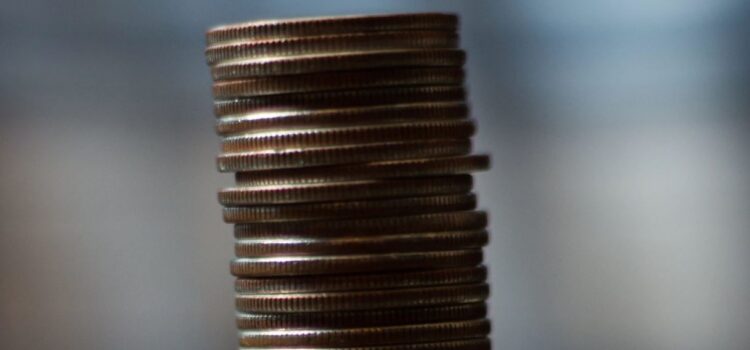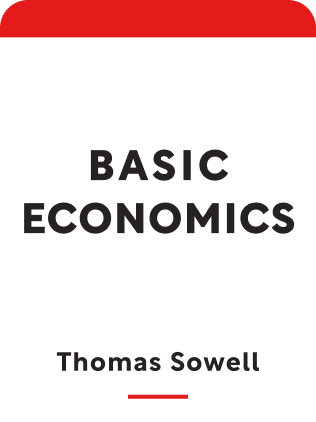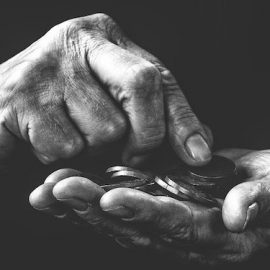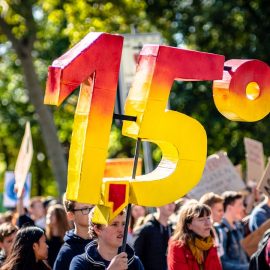

This article is an excerpt from the Shortform book guide to "Basic Economics" by Thomas Sowell. Shortform has the world's best summaries and analyses of books you should be reading.
Like this article? Sign up for a free trial here .
What is the difference between inflation and deflation? Can inflation and deflation be happening simultaneously? What is the problem with having extreme inflation or deflation?
In the most simplistic terms, inflation is the general increase in prices, while deflation is the overall decrease. Inflation and deflation can happen simultaneously in different classes. Both are problematic for an economy when taken to their extremes.
Keep reading to learn about the difference between inflation and deflation and why either is economically problematic.
Inflation vs. Deflation
What is the difference between inflation and deflation? Inflation is a reduction in the value of money caused by a general rise in prices and an increase in the money supply. Deflation, on the other hand, is an increase in the value of money caused by a drop in both prices and money supply.
Inflation
Inflation is a general rise in prices. It happens when people have more money without a corresponding increase in the volume of output – thus people bid against each other and increase prices.
To increase wealth, government officials are often tempted to create more money and spend it – an opaque and subtle change – rather than increase taxes. Not only are taxes inherently disliked by voters, they tend to reduce output since they reduce the rate of return on activities.
For example, fighting a war may require half a country’s output. For the government to buy this output, instead of taxing everyone a higher amount, it may choose to create more money for itself. This increases money supply just as consumer goods become more scarce (since output is diverted to warfighting). This leads to inflation.
To prevent government abuse of creating more money, many countries have preferred using money that has an inherently limited supply, like gold. When money is “backed” by gold, it means that gold limits the amount of paper money that can be issued. It does not prevent inflation or deflation, but it keeps both within narrower limits. Increases in supply of gold (like discovering large gold deposits) can increase prices.
Similarly, gold is preferred by some as a store of value, even though gold earns no interest. Increases in the price of gold reflect worry about inflation that can erode the power of official currencies. Likewise, long periods of price stability see gold prices fall.
Inflation disproportionately affects the poor, since the rich often have their wealth invested in assets that rise in value with inflation, like stocks or real estate.
Doubling the money supply while fixing the amount of goods may more than double price level, since people may lose faith in the money and increase spending to convert money into assets, bidding up prices. This can lead to runaway inflation, as happened in Germany in the 1920s. In runaway inflation, producers find it risky to produce, since by the time they sell their output the price may represent less purchasing power than what they spent.
Deflation
Deflation is a general decrease in prices. It occurs when less money circulates relative to output.
Deflation can be a problem because debts are fixed in the absolute amount of money that is owed, even though that number now represents increased purchasing power, effectively raising the payment amounts. For instance, in a deflationary period, a debt of $1000 started 5 years ago may now represent $1300 in purchasing power, and so the debtor likely has to pay a greater fraction of his income than before. Aggravating the problem, income tends to decrease in deflationary periods. Trouble for debtors becomes trouble for creditors as debtors default.
Similarly, companies that have already incurred costs for services at pre-deflation prices can no longer charge pre-deflation prices for their goods. This threatens the survival of the company.
Similarly, when wages were specified in contracts, workers who kept their jobs earned more purchasing power than originally signed. However, employers tend to let go of workers since they are now more relatively expensive.
In deflationary periods, people hold onto their money for longer since employment and business stability are now more insecure. This causes fewer purchases, less production of new goods, with less demand for labor and unemployment, which then feeds back into holding further money in a vicious cycle.
During the Great Depression, the US government made mistakes by raising the interest rate, fixing wage rates at pre-depression levels, and propping up prices of farm products – all moves that hampered investment and employment.
Aggregate demand is created not just by the government but also by credits and leveraged lending. When credits are liquidated, this reduces aggregate demand, just as if the official money supply had contracted.

———End of Preview———
Like what you just read? Read the rest of the world's best book summary and analysis of Thomas Sowell's "Basic Economics" at Shortform .
Here's what you'll find in our full Basic Economics summary :
- Why we use money, rather than bartering our services with each other
- Why some nations prosper, while others stay poor despite vast natural resources
- How rent control might actually reduce housing supply and quality






